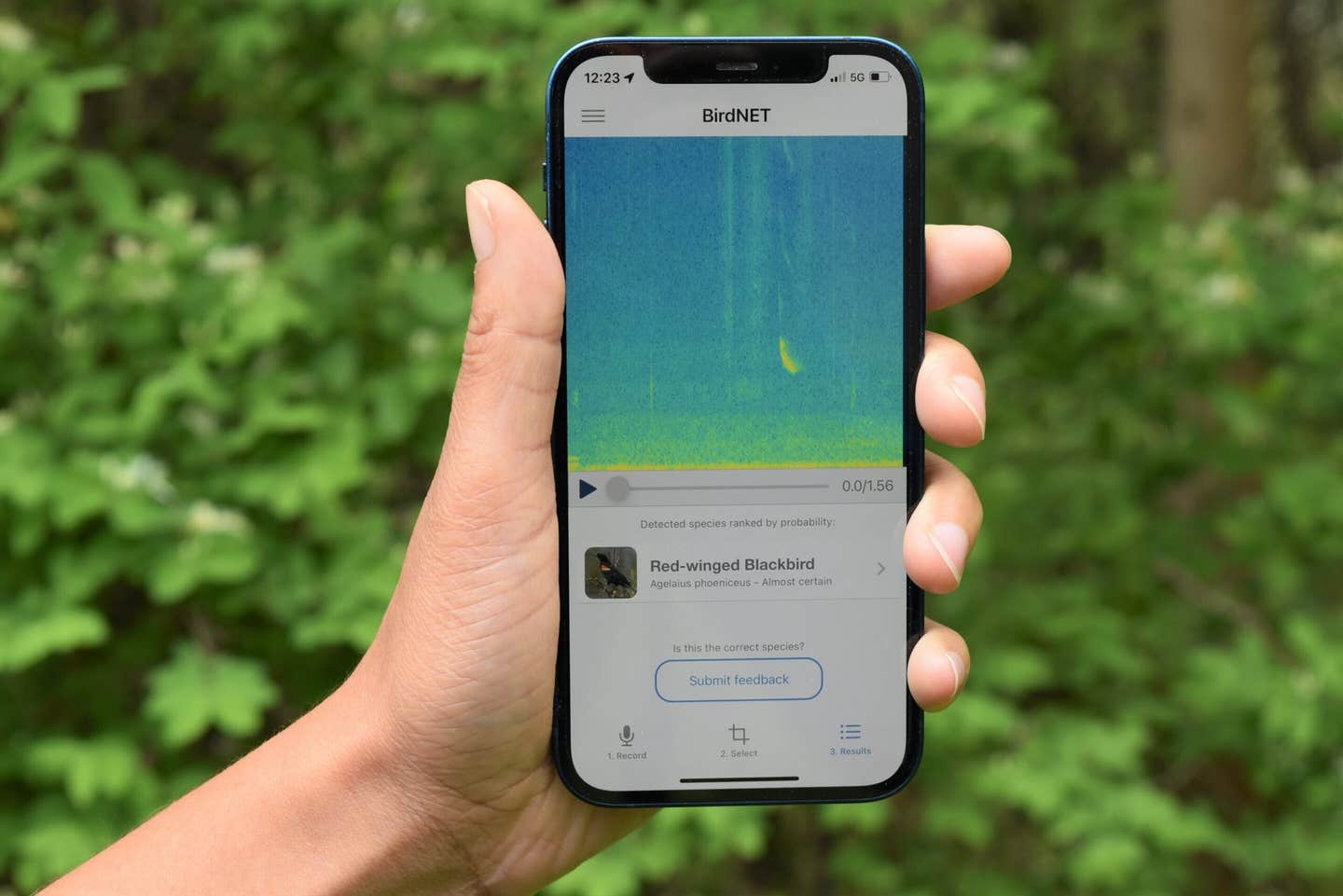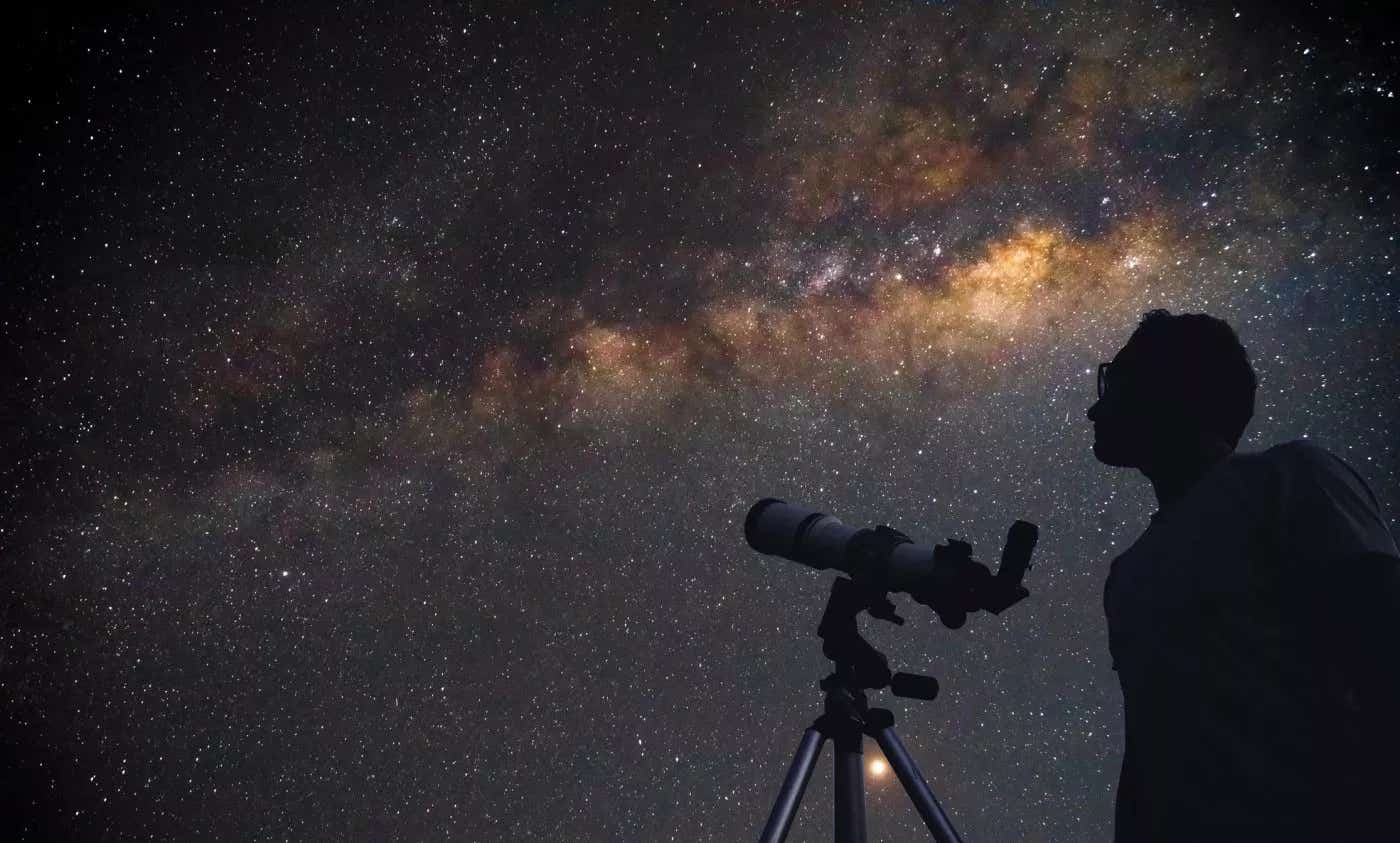Identifying bird species by sound, an app opens new avenues for citizen science
The BirdNET app, a free machine-learning powered tool that can identify over 3,000 birds by simply recording sounds.

[Aug 10, 2022: Staff Writers, Public Library of Science]
Researchers have developed the BirdNET App, where people can easily participate in bird research and conservation. (Credit: Ashakur Rahaman, Yang Center/Cornell Lab of Ornithology (CC-BY 4.0, creativecommons.org/licenses/by/4.0/))
The BirdNET app, a free machine-learning powered tool that can identify over 3,000 birds by sound alone, generates reliable scientific data and makes it easier for people to contribute citizen-science data on birds by simply recording sounds.
An article publishing in the open access journal PLOS Biology by Connor Wood and colleagues in the K. Lisa Yang Center for Conservation Bioacoustics at the Cornell Lab of Ornithology, U.S., suggests that the BirdNET app lowers the barrier to citizen science because it doesn't require bird-identification skills to participate. Users simply listen for birds and tap the app to record. BirdNET uses artificial intelligence to automatically identify the species by sound and captures the recording for use in research.
"Our guiding design principles were that we needed an accurate algorithm and a simple user interface," said study co-author Stefan Kahl in the Yang Center at the Cornell Lab, who led the technical development. "Otherwise, users would not return to the app." The results exceeded expectations: Since its launch in 2018, more than 2.2 million people have contributed data.
To test whether the app could generate reliable scientific data, the authors selected four test cases in which conventional research had already provided robust answers.
Related Stories
Their results show that BirdNET app data successfully replicated known patterns of song dialects in North American and European songbirds and accurately mapped a bird migration on both continents.
Validating the reliability of the app data for research purposes was the first step in what they hope will be a long-term, global research effort—not just for birds, but ultimately for all wildlife and indeed entire soundscapes. Data used in the four test cases is publicly available, and the authors are working on making the entire dataset open.
To test whether the app could indeed remove barriers to citizen science—something that is often suggested but rarely tested researchers compared usage of the BirdNET App to that of eBird. Both programs enable citizen scientists to submit bird observations for research purposes, but eBird, a pioneering project initiated in 2003, is designed for intermediate/expert birders who can submit checklists of birds they have identified, while the BirdNET app can be used by beginners who have no knowledge of birds.
Images of the app user interface (iOS version, American English) and the distribution of submissions. A spectrogram (A) visualizes environmental sounds in real time by flowing right to left and is paused when the user selects a snippet of sound for analysis (B). After that snippet is analyzed by the BirdNET server, a qualitative species identification is provided (C), and the user has the option of indicating whether that identification is correct (D). BirdNET App users made 31 million submissions in 2020, and even after stringent quality filters were applied, 5.8 million observations remained and achieved near-total coverage of North America and Europe (E). Image credit: C. Wood; base maps were provided by the University of Minnesota.
In 2020, the BirdNET App engaged >1.1 million participants compared to 317,792 eBird participants (eBird: An online database of bird distribution and abundance. Ithaca, New York: Cornell Lab of Ornithology; 2021). This difference in participation does not imply that one is “better” than the other; instead, it reflects conscious design choices. By catering to a smaller pool of more advanced users, eBird can generate high-quality data (e.g., abundance and nondetections).
People can easily participate in bird research and conservation through the recently developed BirdNET App. Credit: Stefan Kahl, Yang Center/Cornell Lab of Ornithology (CREDIT: CC-BY 4.0, creativecommons.org/licenses/by/4.0/)
By removing the need for preexisting bird identification skills and specialized equipment like binoculars, the BirdNET App vastly expands the number of potential citizen science participants, although it generates more simplistic presence-only data. These paradigms are complementary, and, ideally, synergistic, with an exchange of data and participants leading to improved research tools and conservation outcomes.
"The most exciting part of this work is how simple it is for people to participate in bird research and conservation," Wood adds.
"You don't need to know anything about birds, you just need a smartphone, and the BirdNET app can then provide both you and the research team with a prediction for what bird you've heard. This has led to tremendous participation worldwide, which translates to an incredible wealth of data. It's really a testament to an enthusiasm for birds that unites people from all walks of life", Wood said.
The BirdNET app is part of the Cornell Lab of Ornithology's suite of tools, including the educational Merlin Bird ID app and citizen-science apps eBird, NestWatch, and Project FeederWatch, which together have generated more than 1 billion bird observations, sounds, and photos from participants around the world for use in science and conservation.
For more environmental good news stories check out our Green Impact section at The Brighter Side of News.
Note: Materials provided above by Public Library of Science. Content may be edited for style and length.
Like these kind of feel good stories? Get the Brighter Side of News' newsletter.
Joshua Shavit
Science & Technology Writer | AI and Robotics Reporter
Joshua Shavit is a Los Angeles-based science and technology writer with a passion for exploring the breakthroughs shaping the future. As a contributor to The Brighter Side of News, he focuses on positive and transformative advancements in AI, technology, physics, engineering, robotics and space science. Joshua is currently working towards a Bachelor of Science in Business Administration at the University of California, Berkeley. He combines his academic background with a talent for storytelling, making complex scientific discoveries engaging and accessible. His work highlights the innovators behind the ideas, bringing readers closer to the people driving progress.



